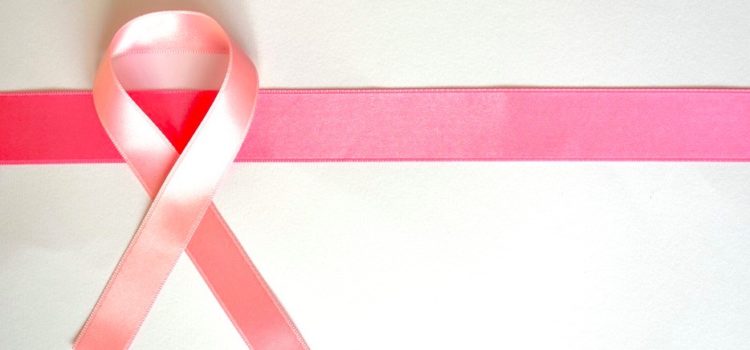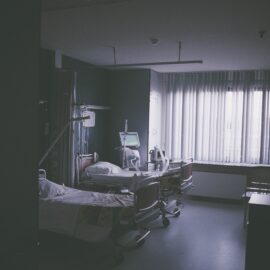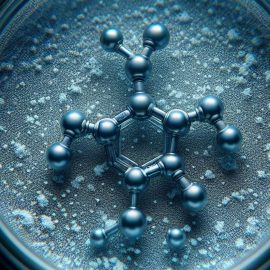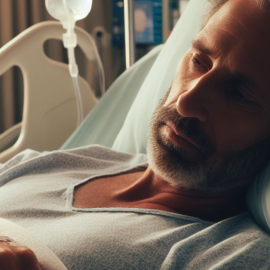

This article is an excerpt from the Shortform book guide to "The Emperor of All Maladies" by Siddhartha Mukherjee. Shortform has the world's best summaries and analyses of books you should be reading.
Like this article? Sign up for a free trial here .
What do we currently know about cancer? How has our understanding of the disease evolved throughout the years?
Until relatively recently, doctors didn’t truly know what cancer was or how it occurred, let alone how to treat it. Therefore, a great deal of the history of cancer research is just trying to answer those basic questions about the disease.
Here is an overview of the history of cancer research, from the pre-1900s to 2010.
Pre-1900s
Mukherjee says that cancer has probably existed for as long as our species has—for example, a human jawbone dated to approximately 2 million BC shows signs of a cancerous tumor invading it. However, cancer was extremely rare until recently because most people died young, and cancer rates increase exponentially with age.
In 130 AD the Greek physician Galen asserted that an imbalance of black bile in the body causes cancer. While Galen was wrong (in fact, there’s no such thing as “black bile”), Mukherjee says this theory was remarkable for recognizing that cancer is a systemic issue (affecting the entire body) rather than a localized tumor. Modern medicine wouldn’t rediscover that fact for nearly two millennia.
(Shortform note: Galen’s black bile theory—and the fact that it was clearly disproven later—illustrates an important point about scientific advancement: As Thomas Kuhn explains it in The Structure of Scientific Revolutions, science advances by disproving what’s false, rather than discovering what’s true. In other words, scientific progress isn’t about becoming “more right” so much as it’s about becoming “less wrong.”)
In 1775, surgeon Percivall Pott noted that a certain type of scrotal cancer appeared almost exclusively in chimney sweeps. He eventually concluded that soot particles lodged in the skin had caused it. This finding had two major implications:
- Something external (a carcinogen) caused the cancer, as opposed to Galen’s “imbalance of black bile.”
- If cancer has definite external causes, it should be possible to prevent cancer by limiting exposure to those carcinogens.
Treating Cancer
Mukherjee says that two major medical advancements of the late 1800s—anesthesia and antisepsis—allowed surgeons to safely perform much more extensive procedures. Though it wasn’t a cure in and of itself, Mukherjee writes that the ability to remove malignant tumors was a major step forward in the fight against cancer.
Using these advancements in anesthesia and antisepsis, surgeons William Halsted and Willy Meyer pioneered the radical mastectomy to treat breast cancer. This procedure involves removing the entire breast, as well as the underlying muscle and lymph nodes—as much tissue as the surgeon can remove without killing the patient.
The radical mastectomy was rooted in Halsted’s own “centrifugal theory” of cancer: Halsted believed that cancer started at a localized point in the body and spread out in widening arcs. By cutting away as much tissue as possible, surgeons hoped to outpace cancer’s spread through the patient. The procedure was effective in the short term, but the majority of patients relapsed within a few years, no matter how much tissue the surgeons removed.
Mukherjee explains that cancer is difficult (often impossible) to cure with surgery, because if even a single cancerous cell is left behind, it can continue to grow and spread through the body. Furthermore, cancer’s pattern isn’t as predictable as Halsted thought: Cancer cells can enter the bloodstream or the lymphatic system and spread to distant parts of the body without affecting the tissue in between. If the cancer has already spread in this fashion, then surgery—which only removes the localized tumor—is futile.
| Using Surgery to Treat Cancer Although rarely able to cure cancer on its own, surgery is still a common part of cancer treatment. According to the National Cancer Institute, surgery has three major uses: – Removing a tumor. If the patient’s cancer hasn’t spread, surgery can work as Halsted envisioned: Removing all of the cancerous tissue, and thereby curing the patient. – Shrinking a tumor. If removing the entire tumor would be too dangerous, surgeons can instead remove only part of it, which makes it easier for other treatments like chemotherapy to destroy the remaining cancer cells. – Relieving symptoms. Tumors can cause discomfort and pain, so doctors may choose to remove them just to keep the patient more comfortable. |
1900-1950
Mukherjee tells us that, in 1914, biologist Theodor Boveri observed that cancer cells all have chromosomal abnormalities: damage or mutations in the cell’s DNA. He theorized that chromosomal damage causes cancer.
| What Is DNA? Boveri’s discovery in 1914 was the beginning of what we know about cancer today: It’s a corruption of our DNA. Therefore, to understand cancer, you must first understand what healthy DNA does, and how. Your genes are made of DNA (deoxyribonucleic acid). It’s like a cellular blueprint: DNA carries instructions on how to create proteins, which your body then uses for countless functions such as repairing tissue damage and transporting nutrients where they’re needed. Some of those proteins also help with the process of mitosis, replicating the DNA and helping the cell to divide in order to create new cells. If the DNA gets damaged or mutated, those instructions become garbled. In rare cases, they become garbled in such a way that the cell goes haywire: Mitosis happens much too quickly and much too frequently, leading to cancerous tumors. |
Advancements in Treatment
Mukherjee tells us about several important advancements during this time period: Destroying tumors without surgery, killing cancer cells throughout the body with toxic drugs, and starving out cancer cells by depriving them of key nutrients. These represented powerful new weapons in humanity’s war against cancer.
In the early 1900s, the discovery of X-rays gave doctors the ability to destroy cancer cells through radiation, without the risks of surgery or the need to remove parts of patients’ bodies. However, Mukherjee says that this new treatment ran into the same problem as surgical removal: Radiation therapy only targets a localized area, and it does nothing for systemic cancers. Furthermore, radiation comes with its own side effects and risks, including potentially causing cancer in previously healthy tissue.
Mukherjee says the next major step forward came in the early 1920s, when physiologist Charles Huggins discovered that cancerous prostate cells retain the “nature” of the original prostate cells, which required testosterone to grow and divide. This offered a new approach to treating prostate cancer: Huggins cured the disease in male dogs by castrating them.
For human patients, rather than surgical castration, Huggins performed what he called chemical castration: He injected prostate cancer patients with estrogen in order to suppress their testosterone and thereby starve the cancer cells. Unlike surgery, chemical castration was reversible, and therefore considered much more humane.
Mukherjee tells us about a series of experiments in the 1940s: Yale scientists Alfred Gilman and Louis Goodman studied using tiny doses of sulfur mustard—commonly called mustard gas—and nitrogen mustard (a derivative of sulfur mustard) to treat lymphoma.
They based these studies on the observation that mustard gas destroyed bone marrow, and thereby greatly reduced white blood cell counts. Gilman and Goodman theorized that controlled doses could be used to destroy cancerous bone marrow, and thus cure lymphoma patients. Initial results were promising, but in every case the cancer returned after a few months, and the treatment was much less effective a second time.
Next, Mukherjee explains that Sidney Farber, a pathologist studying childhood leukemia, recognized similar symptoms between that disease and a certain type of anemia (a blood cell deficiency) that comes from a lack of folic acid in the diet. In 1947, after some trial-and-error, Farber concluded that since bone marrow requires folic acid to function properly, he could starve out the leukemia cells with a drug that stops the body from processing folic acid (an antifolate). As with Gilman and Goodman’s mustard injections, patients went into remission and their symptoms all but vanished—however, also like the mustard treatments, the recovery only lasted for a short time.
| Cancer Is an Evolving Disease The reason so many cancer treatments send patients into remission, only for the cancer to come back a short while later, is that cancer is an evolving disease. As biologist Richard Dawkins explains in The Selfish Gene: Replication is not a perfect process. Each time a cell divides, it has to make a copy of its DNA to go into the newly formed cell. However, there’s a small chance that copied DNA could have a mistake in it—a mutation. Furthermore, there’s a small chance that such a mutation could make the new cell resistant to a treatment that kills the other cancer cells. Since cancer cells replicate so quickly and so often, it becomes fairly likely that at least a few will resist a particular drug. Therefore, when that drug is introduced into the patient’s body, the vulnerable cells die while the few resistant ones survive and reproduce. That leads to the patient’s apparent recovery and later relapse, and it also explains why the same treatment is unlikely to work a second time. In short, much like how a species adapts to its environment through evolution, a patient’s cancer can evolve to adapt to the treatments used against it. |
1950-2010
According to Mukherjee, the period from 1950 to 2010 saw researchers working to understand and treat cancer at the microscopic level. Many doctors believed that the key to curing cancer lay in discovering which genes were mutated in cancer cells, and what specific effects those mutations had. They hoped that, by learning exactly how cancer works, they could find new ways to stop it.
One of the major milestones in the history of cancer research was the first formal definition of cancer in 1999; Biologists Robert Weinberg and Douglas Hanahan created a list of six qualities that all cancer cells possess:
- Automatic mitosis. Cancer cells don’t need chemical signals to divide; they’re always “on.”
- Non-responsive to antigrowth signals. Cancer cells do not respond to chemical signals that normally stop cell division.
- “Immortality.” Cancer cells do not respond to chemical signals that normally trigger cell death (called apoptosis).
- Limitless replication. Normal cells can divide a limited number of times; cancer cells bypass this limit, allowing for apparently infinite cell division.
- Self-sustaining. Cancer cells induce nearby blood vessels to grow into the tumor, sustaining the tumor with oxygen and nutrients.
- Mobility. Cancer cells can travel through the bloodstream and attach to other areas of the body (this is called metastasis).
| Refining the Definition of Cancer Although Weinberg and Hanahan aimed to provide clear guidelines for recognizing and understanding cancer, their list wasn’t comprehensive. For example, the National Cancer Institute now recognizes several other qualities of cancer cells that Weinberg and Hanahan’s list didn’t include: – Invade other tissue types. Most cells stop dividing when they encounter other types of cells—for example, bone cells don’t normally try to grow into and through muscle tissue—but cancer cells invade any body part they encounter. – Manipulate the immune system. The body’s immune system normally finds and kills abnormal cells, but some cancerous cells can hide from it; in some cases, they can even trick the immune system into protecting a tumor rather than destroying it. – Use different nutrients and chemical pathways. Cancer cells don’t rely on the same nutrients as normal cells—for example, while the amino acid glutamine is a preferred energy source for all types of cells, cancer cells can substitute several different amino acids for it, making them less reliant on that particular nutrient. Furthermore, cancer cells often process those nutrients differently and more quickly than healthy cells, allowing them to grow and multiply more quickly. |
Cancer Cell Genomes and Pathways
The next major development came in 2006, when a project called the Cancer Genome Atlas began sequencing the genomes (complete DNA sequences) of various cancer cells, looking for the specific collections of mutations that give rise to cancer. Early results commonly showed anywhere from five to 80 mutated genes, depending on the type of cancer. Mukherjee says these results mean that cancer cells are extremely diverse, and finding the exact mutations in any given cancer patient to inform treatment would be difficult and time-consuming.
However, Mukherjee adds that a much less daunting approach would be to identify which biological pathways are affected in an individual patient and repair those, which would theoretically cure any form of cancer. Most biological processes happen through pathways—numerous genes working together to produce a single effect—and therefore many different mutations can lead to the same outcome because they all affect the same pathway. Researchers believe that the typical cancer cell has anywhere from 11 to 15 disrupted pathways, with an average of 13.
Understanding cancer at the microscopic level—through the Cancer Genome Atlas as well as other research methods—can also help scientists identify possible carcinogens; they can directly test whether particular chemicals activate cancer-related genetic pathways.
Advancements in Treatment
Chemotherapy is a cornerstone of cancer treatment even today. Many of the major advancements in recent decades have centered around making chemotherapy more effective—more reliably sending patients into remission, as well as preventing relapses.
Mukherjee says that the first case of chemotherapy truly curing cancer happened in 1956. An oncologist named Min Chiu Li tracked the progress of a patient’s cancer by measuring a chemical the cancer cells secreted, rather than observing visible tumors.
Li continued treatment until that chemical marker was completely gone, which required many more doses over a much longer time period than treatment based on tumor observation. Although other doctors argued that he was being cruel and hurtful—continuing to administer nauseating and toxic drugs for no reason—Li’s patient never relapsed.
Several new discoveries showed that curing cancer usually requires—at minimum—using a combination of different treatments, and continuing the treatment regimen until all signs of cancer are gone.
A series of trials from 1957-1962 showed that drug cocktails (mixtures of multiple drugs) are significantly more effective than individual drugs. Unfortunately, according to Mukherjee, using multiple drugs also increases the danger to the patient: Drugs don’t discriminate between cancerous cells and healthy ones, so more potent treatments kill more of both types of cells.
Mukherjee writes that, in addition to combining drugs in chemo cocktails, doctors began using chemotherapy and radiation therapy together. Sidney Farber—the pathologist who studied childhood leukemia—was the first to try this approach, in 1958. He treated Wilms’ tumor (a type of kidney cancer that often spreads to the lungs) with a combination of X-rays and a drug called actinomycin D. Farber found that the combination was significantly more effective than using either treatment alone.
Around the same time, a researcher named Howard Skipper discovered that chemotherapy kills cancer cells in clear fractions of whatever remains: For instance, the first treatment might take the number of cancer cells in a patient from 1000 to 100, the second from 100 to 10, the third from 10 to 1, and a fourth round of chemotherapy finally takes the number to zero (remember that even a single surviving cancer cell can rapidly divide and cause the patient to relapse).
| How Does Chemotherapy Work? Given that chemotherapy can’t distinguish between diseased cells and healthy ones, it would be reasonable to ask how it can cure cancer without killing the patient as well. In simple terms, it works because cancer cells grow and divide so rapidly—chemotherapy targets cells at particular stages of their life cycles, and the cancerous cells go through those cycles much more quickly than (most) healthy cells. Therefore, the diseased cells die off sooner than the healthy ones. Incidentally, this also explains many of chemotherapy’s side effects. Cells that normally reproduce quickly also die off, such as white blood cells (leading to immunosuppression) and intestinal cells (leading to nausea and digestive problems). |
Chemotherapy-Resistant Cancer and the Rise of Total Therapy
Despite advancements in chemotherapy, doctors found that some cancers are resistant to the treatment. In 1962, trials of a new drug cocktail called VAMP sent leukemia patients into remission. However, most patients relapsed after approximately a year with leukemia cells in their spines and brains. Mukherjee explains that the blood-brain barrier—a protective layer of densely packed cells that separates the brain’s blood vessels from the actual brain tissue—makes the central nervous system (the brain and spine) impervious to most chemotherapy.
In 1962, a year after becoming the director of St. Jude Children’s Research Hospital, oncologist Donald Pinkel began developing a comprehensive course of treatment for childhood leukemia that he called “total therapy.” This development was based on four key innovations:
- More elaborate drug cocktails, carefully mixing up to eight different drugs to maximize effectiveness while keeping toxicity to survivable levels
- Bypassing the blood-brain barrier by injecting the drugs directly into the spinal fluid
- Using X-ray radiation therapy to directly kill cancerous cells in the brain
- Continuing treatment long after visible signs of cancer are gone—potentially for years—in order to make sure that every trace of cancer is scoured from the patient.
In 1998, researchers made another step in treating chemotherapy-resistant cancers when they developed two cancer antibodies—drugs designed to specifically target cancer cells—that sent patients into remission during clinical trials. Mukherjee says that these two drugs show that it is possible to treat cancer by targeting key genes and proteins that the disease relies on to survive. In the decade following these trials, the National Cancer Institute listed 24 drugs similar to those two as targeted cancer therapies: treatments that pinpoint a particular type of cell, as opposed to killing cells indiscriminately.
| How Antibody Drugs Work We mentioned earlier that cancer cells often hide from the immune system or, worse, manipulate it into protecting the tumor rather than destroying it. Antibody drugs are lab-grown immune system cells designed to help the immune system fight cancerous cells. The Mayo Clinic explains that different antibody drugs have various effects, including: – Marking cancer cells for destruction. Some antibody drugs act like flags, helping the immune system “see” the cancer cells they bind to. – Delivering other treatments. Some antibodies can carry other treatments like chemotherapy or radiation therapy. They deliver those treatments directly to the cancerous cells, which helps to preserve healthy cells and minimize side effects of the treatment. – Preventing cell growth. Certain antibody drugs block cancer cells from interacting with proteins that they need to continue growing, or they stop blood vessels from growing through the tumor to provide it with nutrients. – Destroying cancer cells directly. Some types of antibody drugs cause deadly reactions inside the cells they bind to. |

———End of Preview———
Like what you just read? Read the rest of the world's best book summary and analysis of Siddhartha Mukherjee's "The Emperor of All Maladies" at Shortform .
Here's what you'll find in our full The Emperor of All Maladies summary :
- An overview and rough timeline of the fight against cancer
- A look into the more technical aspects of cancer and cancer treatment
- The social aspects of the fight against cancer






